Imagine stepping into your backyard and being greeted by a modern oasis, a space that seamlessly blends beauty with functionality. Whether you’re a novice just dipping your toes into the world of outdoor design or a seasoned pro looking to elevate your existing space, “15 Modern Backyard Structures Ideas for Your Next Project” is your ultimate guide. Get ready to unlock the potential of your outdoor living area and create a retreat that reflects your personal style while enhancing your home’s value.
In this guide, you’ll discover a treasure trove of innovative ideas that promise to transform your backyard into a practical yet stunning sanctuary. From sleek pergolas to cozy garden rooms, each idea is designed to inspire confidence and creativity, ensuring that every homeowner can bring their vision to life. Dive in, and find joy in crafting a beautiful, functional space that invites relaxation, entertainment, and endless enjoyment.
Incorporate Eco-Friendly Building Materials
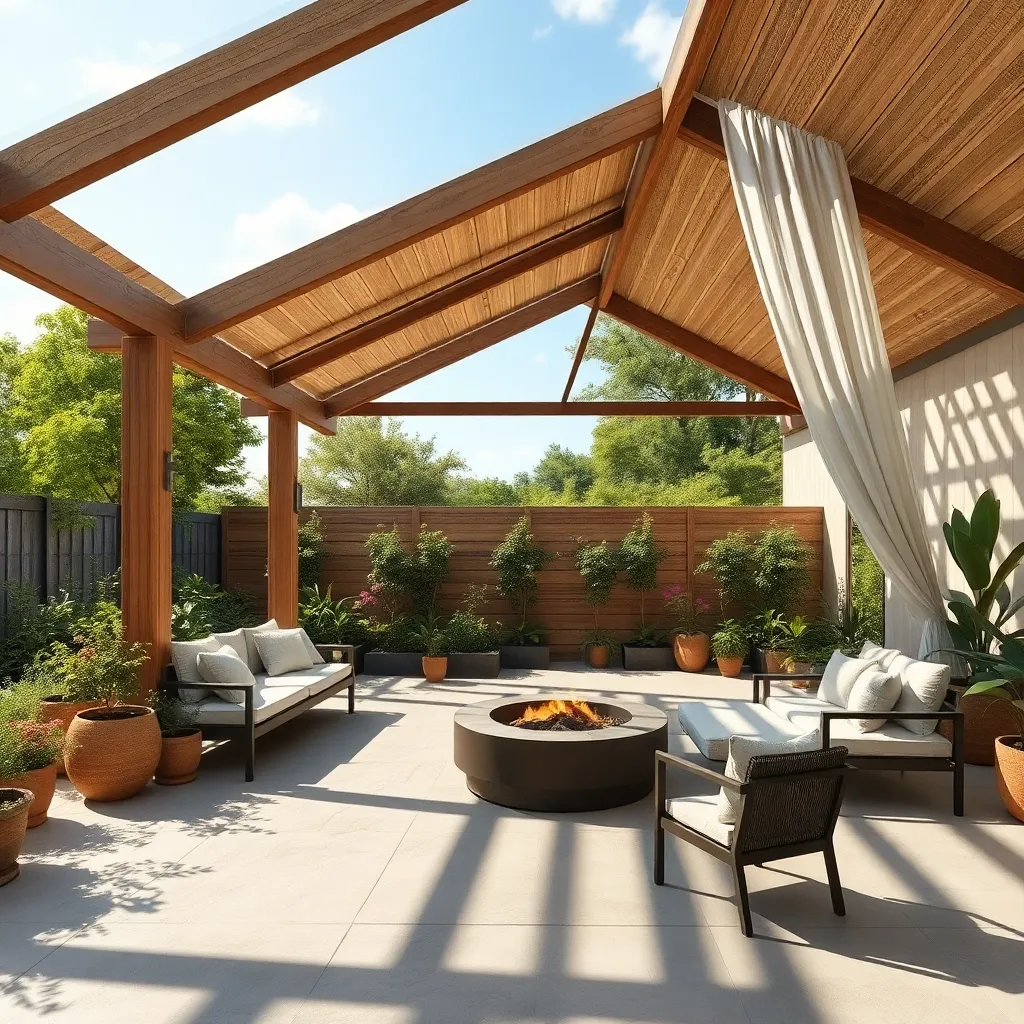
When planning your modern backyard structure, consider using eco-friendly building materials to enhance sustainability. Opt for materials like reclaimed wood, bamboo, or recycled metal, which not only reduce environmental impact but also bring a unique aesthetic charm. For beginners, starting with reclaimed wood is an excellent choice; it’s accessible and easy to work with, while advanced builders might explore innovative options like green roofs using native plants, which provide insulation and support biodiversity.
Incorporating eco-friendly materials involves thoughtful selection and smart design. Use permeable pavers for flooring to allow rainwater to seep through, reducing runoff and enhancing drainage. Consider the structure’s orientation to maximize natural light and ventilation, reducing reliance on artificial lighting and cooling. Advanced builders can integrate solar panels or rainwater collection systems to further boost the shelter’s sustainability. With these steps, you can create a space that’s not only stylish and modern but also kind to the planet.
Add Retractable Canopies for Flexibility
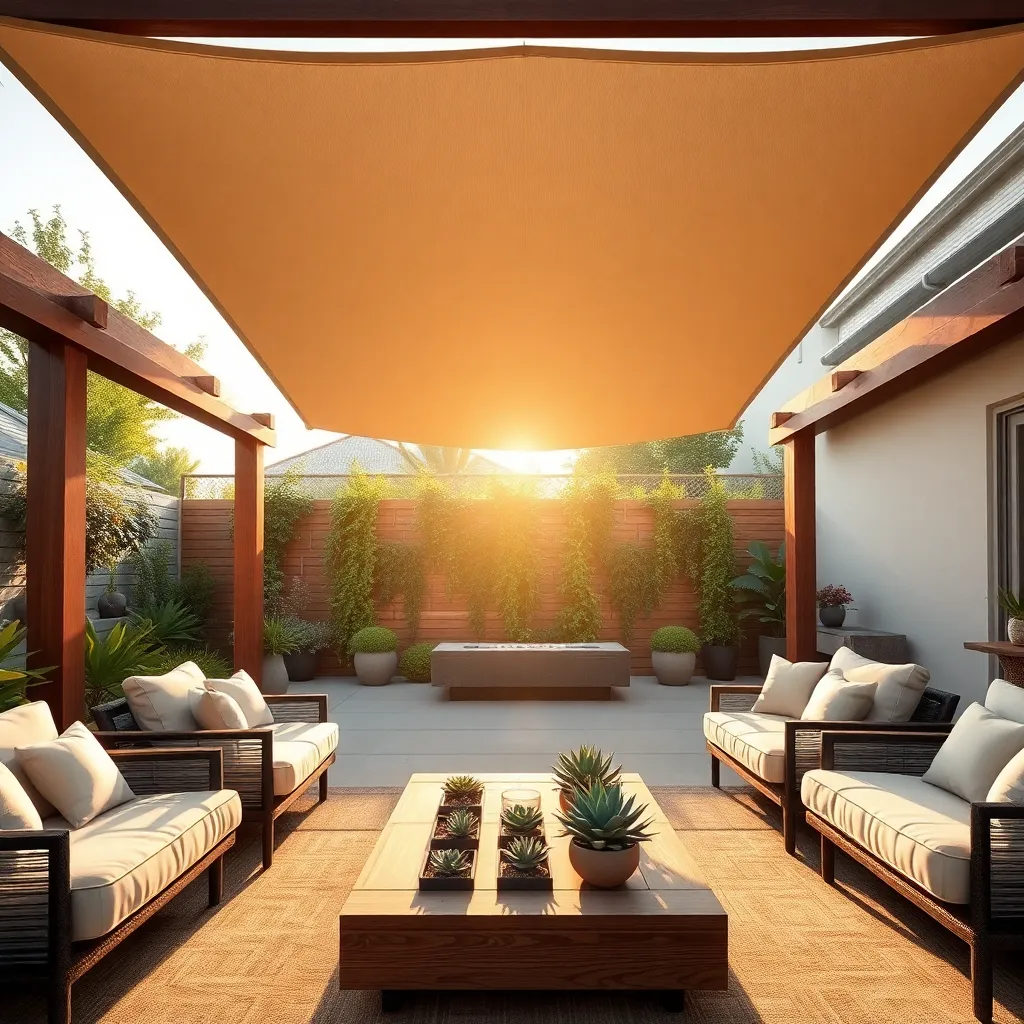
To enhance the flexibility of your outdoor space, consider adding retractable canopies. These structures provide the perfect blend of shade and sunlight, allowing you to adjust coverage based on the weather or your preference. Look for durable materials such as aluminum frames and UV-resistant fabric to ensure longevity and low maintenance. For those new to outdoor projects, start with a simple manual retractable canopy, which is often more affordable and easier to install.
For a more advanced setup, consider motorized retractable canopies with automated sensors that adjust based on the weather conditions. This feature is ideal for tech-savvy homeowners who want to integrate their canopies with smart home systems. When planning your canopy, ensure it’s proportionate to your space; an ideal size might be 10×10 feet for a standard patio. Always anchor the structure securely, especially in areas prone to high winds, to maximize safety and functionality.
Utilize Modular Furniture for Versatility
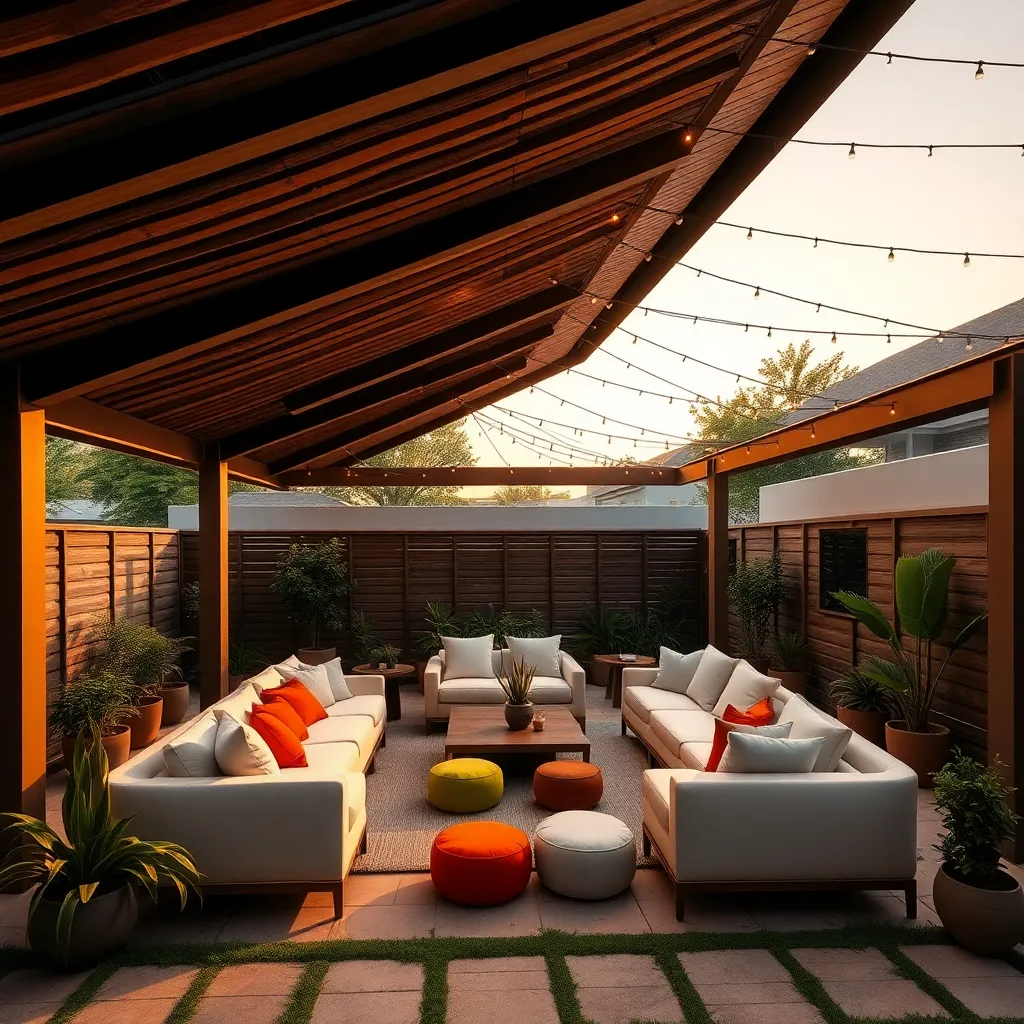
Consider incorporating modular furniture into your backyard to enhance versatility and functionality. These pieces, often crafted from durable materials like weather-resistant aluminum or treated wood, can be easily rearranged to suit different occasions. For instance, opt for sectional sofas that can be reconfigured to create a cozy corner for intimate gatherings or an open seating area for larger parties. Additionally, look for modular tables with adjustable heights to serve various purposes, from dining to casual coffee chats.
To maximize the benefits of modular furniture, choose designs that include built-in storage options. This feature allows you to keep cushions, throws, or gardening tools neatly tucked away, freeing up space and maintaining a tidy look. For a touch of sophistication, consider pieces with interchangeable covers or cushions in different colors and textures, enabling you to update the look of your outdoor space effortlessly. Advanced users might explore integrating these elements with smart home technology, such as app-controlled lighting embedded into modular units, to create an adaptable and modern outdoor living area.
Design Structures with Natural Ventilation
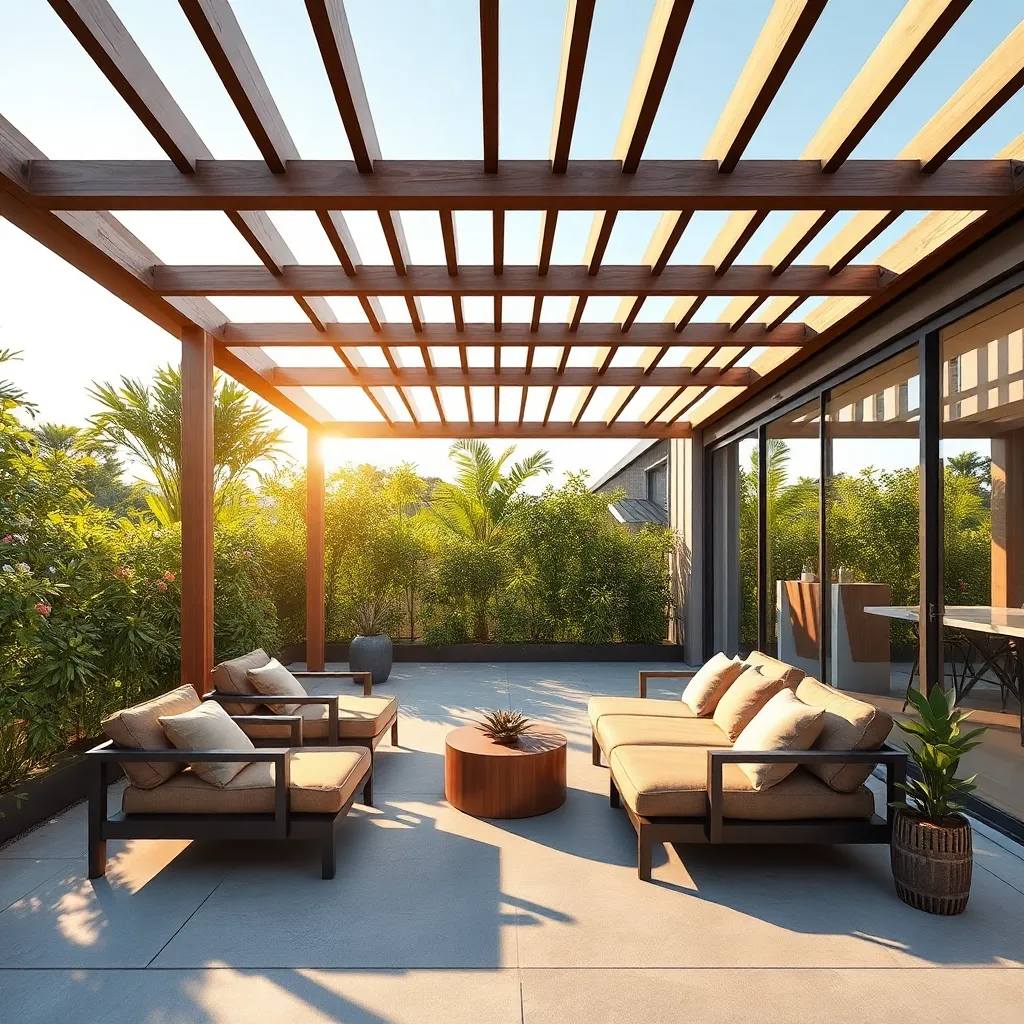
Creating a backyard structure with natural ventilation can significantly enhance comfort and airflow. Start by incorporating open designs such as pergolas or gazebos with lattice walls. These structures allow air to circulate freely while providing partial shade. Use materials like bamboo or cedar, which are not only durable but also allow air to pass through easily. For beginners, consider using prefabricated kits that are easy to assemble and offer customizable ventilation options.
Incorporating design elements like elevated roofs or strategically placed vents can further improve ventilation. Advanced DIY enthusiasts might explore building a slatted roof or incorporating adjustable louvers to control airflow based on weather conditions. Ensure that the structure is positioned to take advantage of prevailing winds in your area, which enhances natural cooling. For added comfort, consider integrating retractable screens that can offer protection from insects while still allowing cross-ventilation.
Integrate Vertical Gardens for Privacy
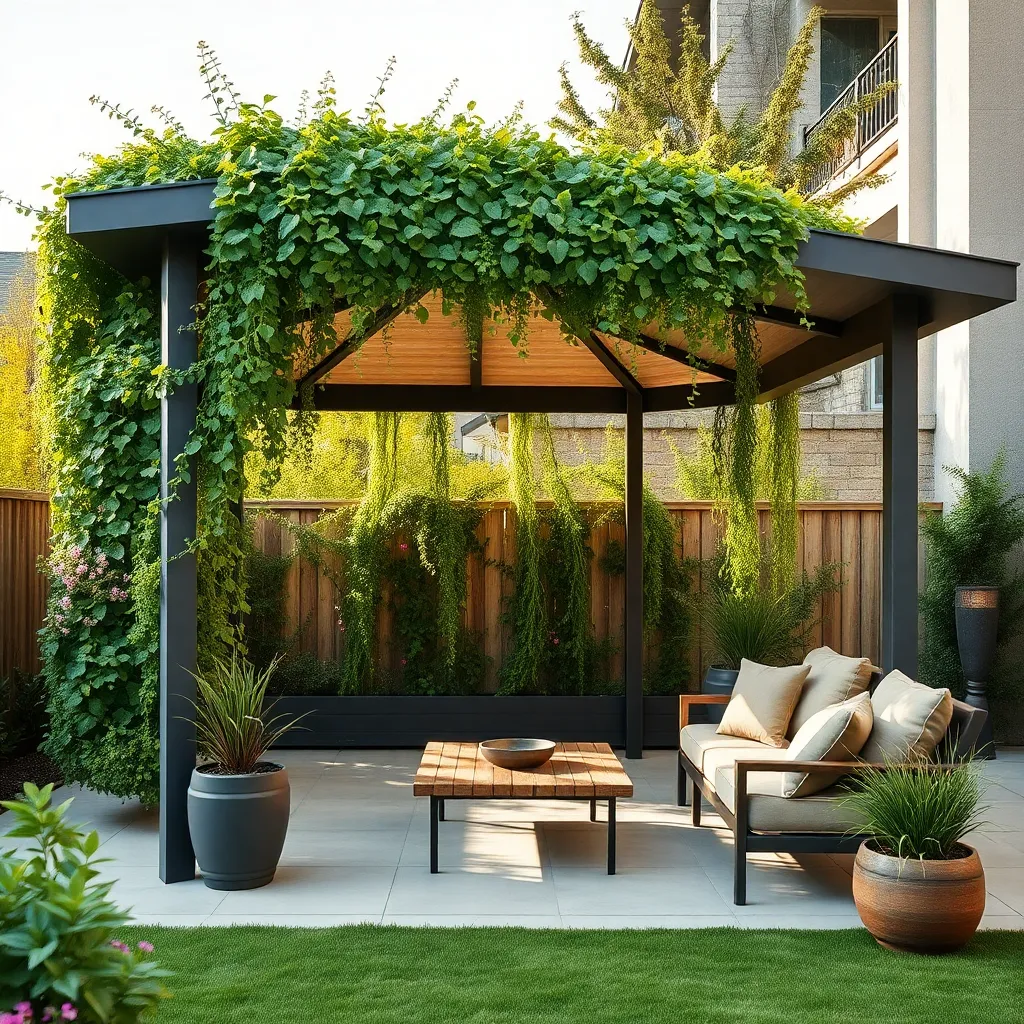
To seamlessly blend privacy with nature, consider integrating vertical gardens into your outdoor shelter design. These structures not only provide much-needed seclusion but also enhance the aesthetic appeal of your backyard. For a beginner-friendly approach, use modular vertical garden kits, which allow for easy assembly and maintenance. Opt for materials like durable, weather-resistant wood or metal frames, and fill them with potted plants such as ferns or climbing ivy for quick coverage.
Advanced gardeners can customize their vertical gardens by incorporating a built-in irrigation system. This ensures consistent watering, essential for maintaining lush greenery. Choose plants like jasmine or clematis for a fragrant, colorful screen. When planning, ensure the vertical garden is at least six feet tall to maximize privacy. With these elements, you create a living wall that serves both function and beauty, transforming your backyard into a personal oasis.
Select Durable, Weather-Resistant Fabrics
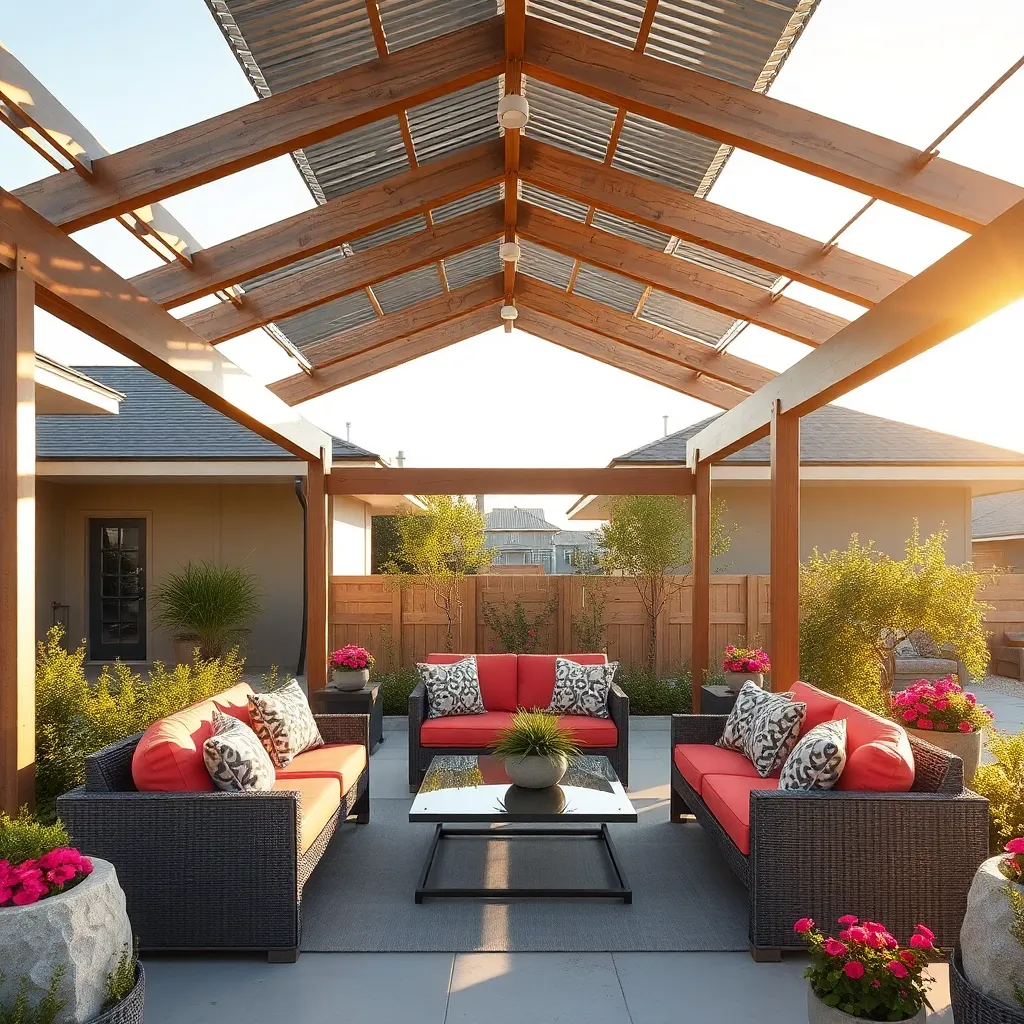
When selecting fabrics for your outdoor shelter, prioritize materials that are not only durable but also weather-resistant. Polyester and acrylic fabrics are excellent choices due to their resilience against UV rays and moisture. For a more advanced option, consider fabrics with a polyurethane coating, which enhances water resistance and longevity. By investing in high-quality materials, you ensure your structure withstands the elements, providing extended enjoyment throughout the seasons.
To enhance the aesthetic appeal and functionality of your outdoor shelter, focus on design elements such as color and texture. Opt for fabrics in neutral tones or earth hues to blend seamlessly with natural surroundings, while bold patterns can create a striking focal point. Ensure your fabric selections are breathable to prevent mold and mildew buildup, maintaining a fresh appearance. For a touch of luxury, incorporate weatherproof curtains or retractable canopies to offer both privacy and shade, catering to various weather conditions and personal preferences.
Create Multi-Functional Outdoor Spaces
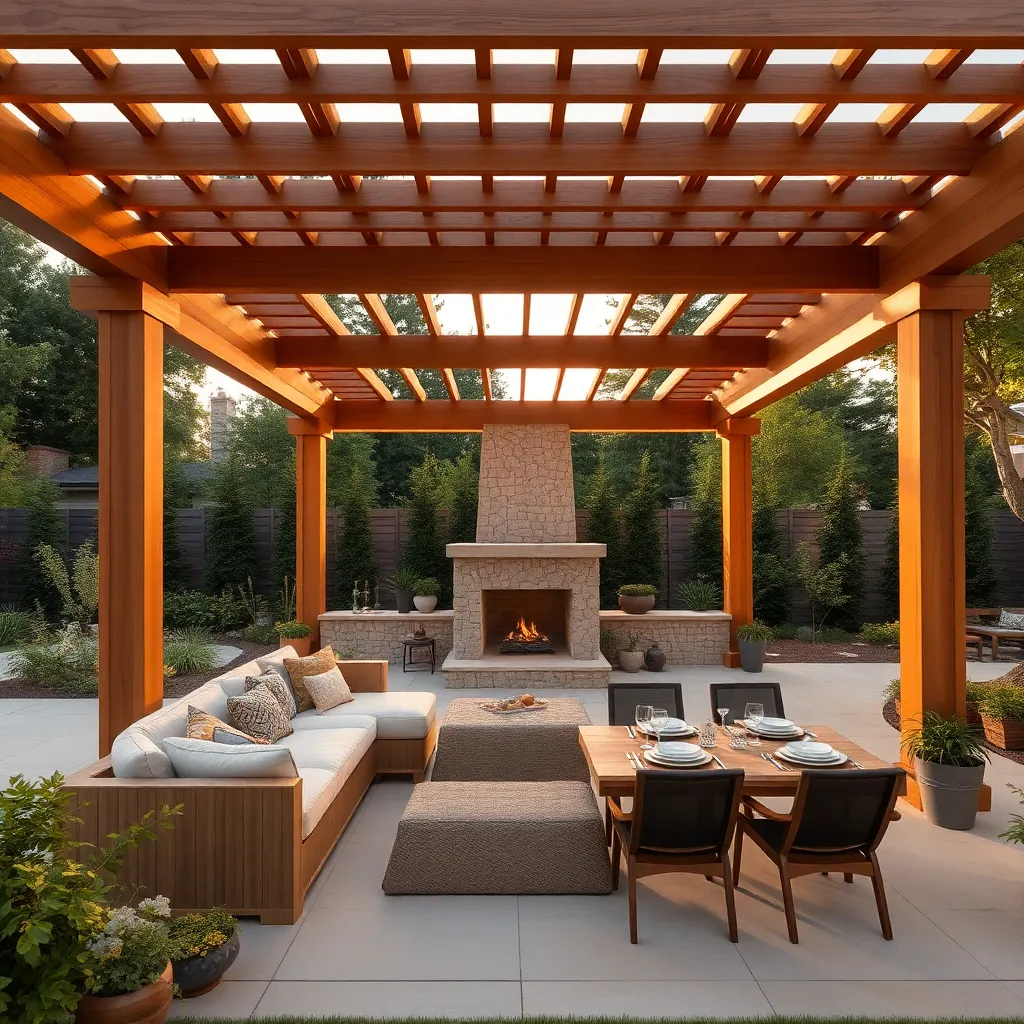
Transforming your backyard into a multi-functional outdoor space is easier than you might think. Start by considering a versatile structure like a pergola, which not only provides shade but can also define different areas of your yard. Choose materials such as cedar or pressure-treated wood for durability and resistance to weather conditions. You can hang retractable canopies or curtains to create a more intimate or sheltered space when needed, allowing you to enjoy your yard regardless of the weather.
For those looking to add a unique touch, consider integrating built-in features like a bench or planter boxes. These additions not only save space but also serve dual purposes, enhancing both aesthetics and functionality. Advanced DIYers might explore solar-powered lighting to illuminate the space at night, making it usable anytime. To ensure your structure is both beautiful and functional, aim for dimensions that allow comfortable movement and furniture placement, typically at least 10×10 feet. By thoughtfully designing these elements, you create an outdoor retreat that adapts to your needs throughout the seasons.
Incorporate Built-in Seating Solutions
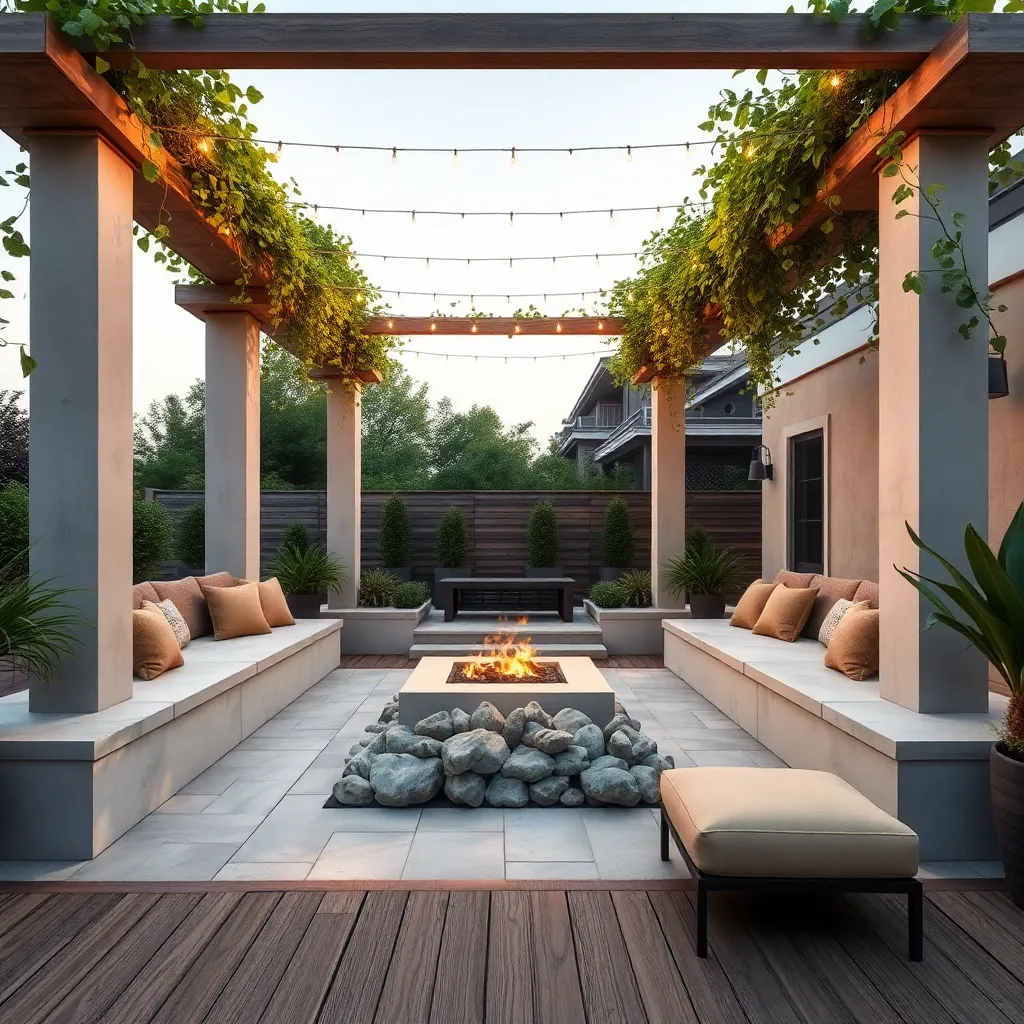
Maximize your outdoor space by incorporating built-in seating solutions into your backyard structures. Opt for materials like treated wood or composite decking, which are durable and weather-resistant, ensuring longevity. Consider building seating along the perimeter of your deck or under a pergola for a seamless integration. For a beginner-friendly approach, start with simple bench designs using 2×4 or 2×6 lumber, and ensure they’re securely anchored. These built-in options not only save space but also create a structured, cohesive look.
For those ready to tackle more advanced projects, incorporate storage within your seating to keep cushions and outdoor essentials tucked away. Use lift-up bench seats or drawers under the seating area to maintain a clean and organized space. Adding cushions and outdoor fabrics in vibrant colors can enhance comfort and style, making the space inviting year-round. Remember to consider your local climate when selecting materials; choose those that can withstand your area’s weather conditions while complementing your overall design aesthetic.
Install Smart Outdoor Lighting Systems
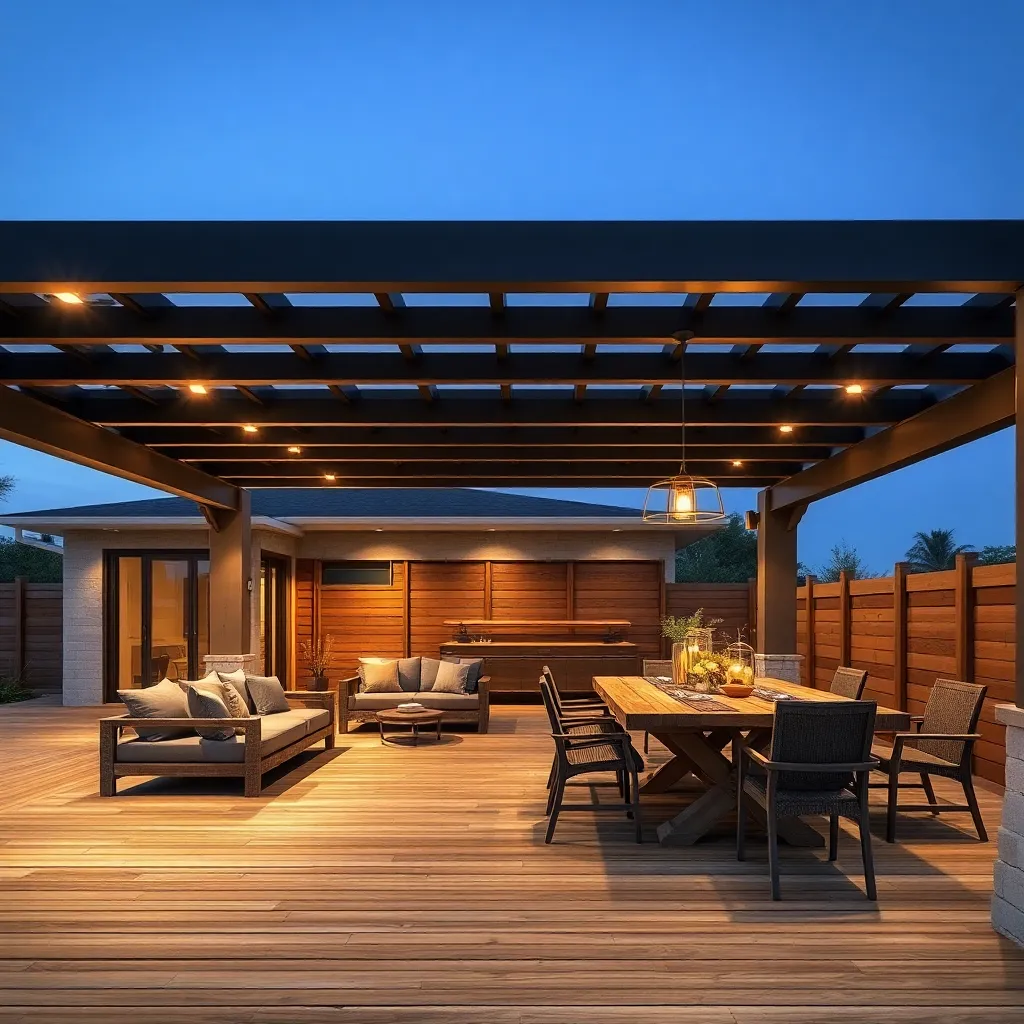
To enhance the functionality and ambiance of your backyard structure, installing a smart outdoor lighting system can be a game-changer. Start by selecting weather-resistant fixtures with LED bulbs, as these are energy-efficient and durable. Smart lighting systems allow you to control the brightness and color of your lights using a smartphone app, creating the perfect atmosphere for any occasion. For beginners, consider starting with simple solar-powered lights, which are easy to install and require minimal maintenance.
Advanced users can explore options like motion sensors and programmable lighting schedules, ensuring your space is both convenient and secure. When planning your installation, think about strategic placement: highlight pathways, accentuate architectural features, and create cozy zones for relaxation. Use a combination of uplighting and downlighting to add depth and drama to your garden structure. By incorporating these smart lighting techniques, you’ll transform your outdoor area into a welcoming retreat, ready for entertaining or unwinding.
Use Sliding Panels for Easy Access
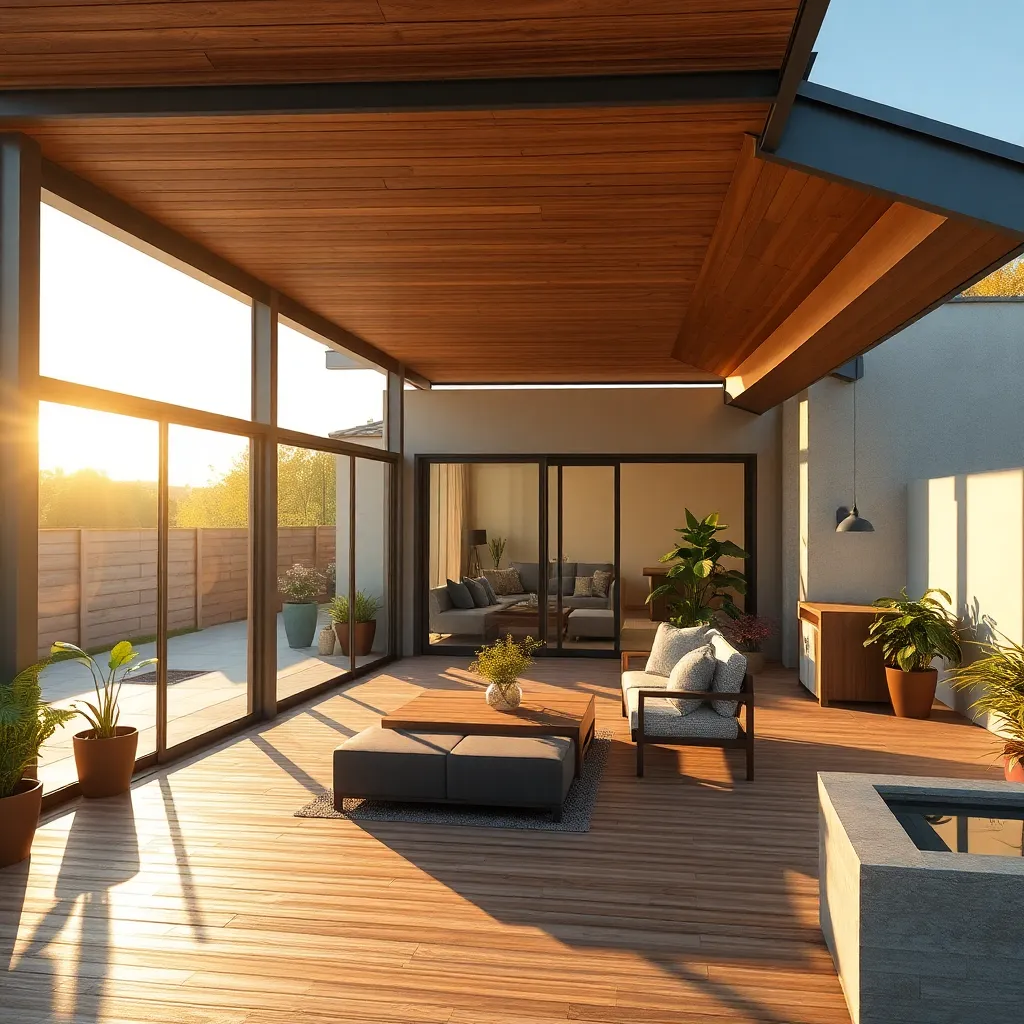
Sliding panels can transform your outdoor shelter into a versatile space, providing both protection and easy access. Opt for durable materials like weather-resistant wood or aluminum to ensure longevity and low maintenance. Consider using frosted or clear polycarbonate panels for a modern touch that maintains privacy while allowing natural light to filter through.
For a seamless experience, install sliding tracks that run smoothly and quietly, using high-quality hardware to prevent rust and wear. Include a locking mechanism for added security and peace of mind. Beginners might start with ready-made kits, while seasoned DIYers could experiment with custom designs to perfectly fit their space and style.
Design with Minimalist Aesthetic in Mind
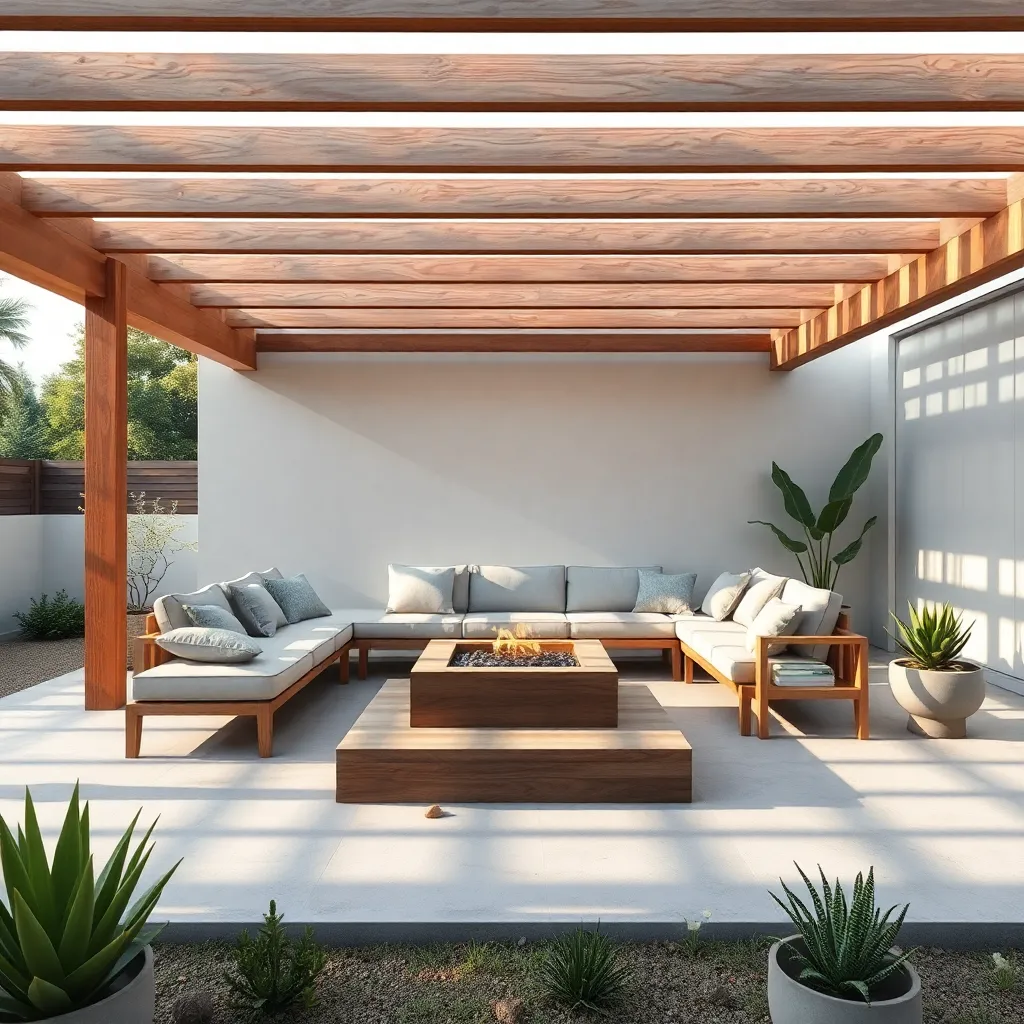
Embrace a minimalist aesthetic by focusing on clean lines and simplicity in your outdoor shelter design. Start with a basic structure using durable materials like steel or treated wood, which provide both strength and a sleek look. Consider a monochromatic color scheme to maintain a modern and uncluttered appearance. Focus on functionality by including multipurpose elements, such as built-in benches or storage, to keep the space organized and clutter-free.
For those looking to advance their design, incorporate large glass panels or open spaces to seamlessly blend the shelter with the surrounding environment. Maximize natural light by orienting the structure to take advantage of the sun’s path. Use minimalistic furnishings, like simple outdoor sofas or chairs, to enhance the overall aesthetic. Remember to keep dimensions proportional to your yard’s size, ensuring the shelter complements rather than overwhelms your outdoor space.
Incorporate Fire Pits for Warmth
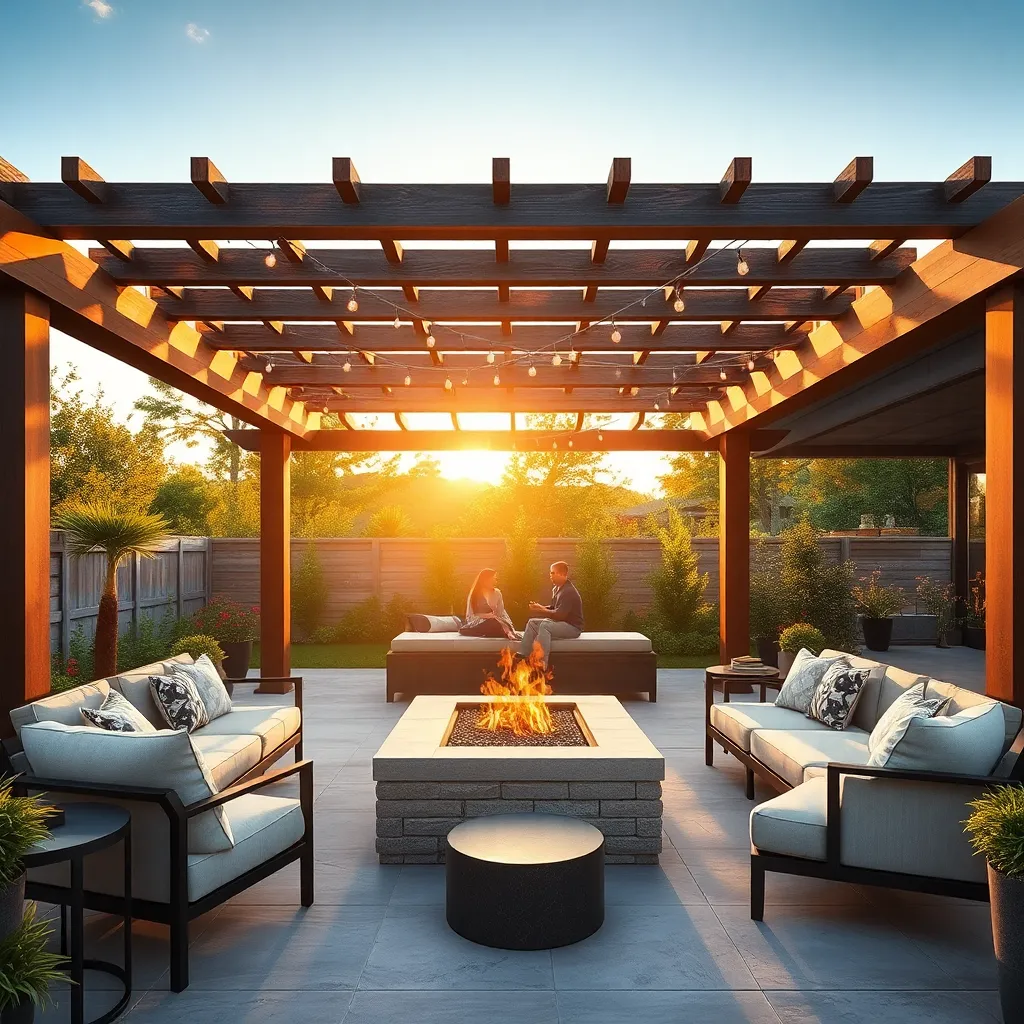
Adding a fire pit to your backyard is a fantastic way to create warmth and ambiance, making your outdoor space usable even on cooler nights. Consider choosing a fire pit design that complements your existing structures—whether it’s a sleek, modern bowl for a minimalist setup or a rustic stone pit for a more traditional look. Material options like cast iron, stainless steel, or natural stone are durable and can withstand the elements, ensuring longevity and safety. For beginners, opting for a pre-fabricated fire pit kit can simplify installation, while seasoned DIY enthusiasts might explore custom designs that incorporate unique features like built-in seating or multi-level tiers.
Location is key when incorporating a fire pit into your backyard; ensure it’s situated at least 10 feet away from structures and overhanging branches for safety. Surrounding the fire pit with non-combustible materials such as gravel or concrete pavers can enhance safety and aesthetics. For added comfort and functionality, consider integrating seating options like weather-resistant cushions or benches made from treated lumber. Additionally, equipping your fire pit area with weatherproof storage can keep firewood dry and tools handy. These thoughtful design choices not only enhance the usability of your outdoor space but also elevate its overall appeal.
Integrate Solar Panels for Energy Efficiency
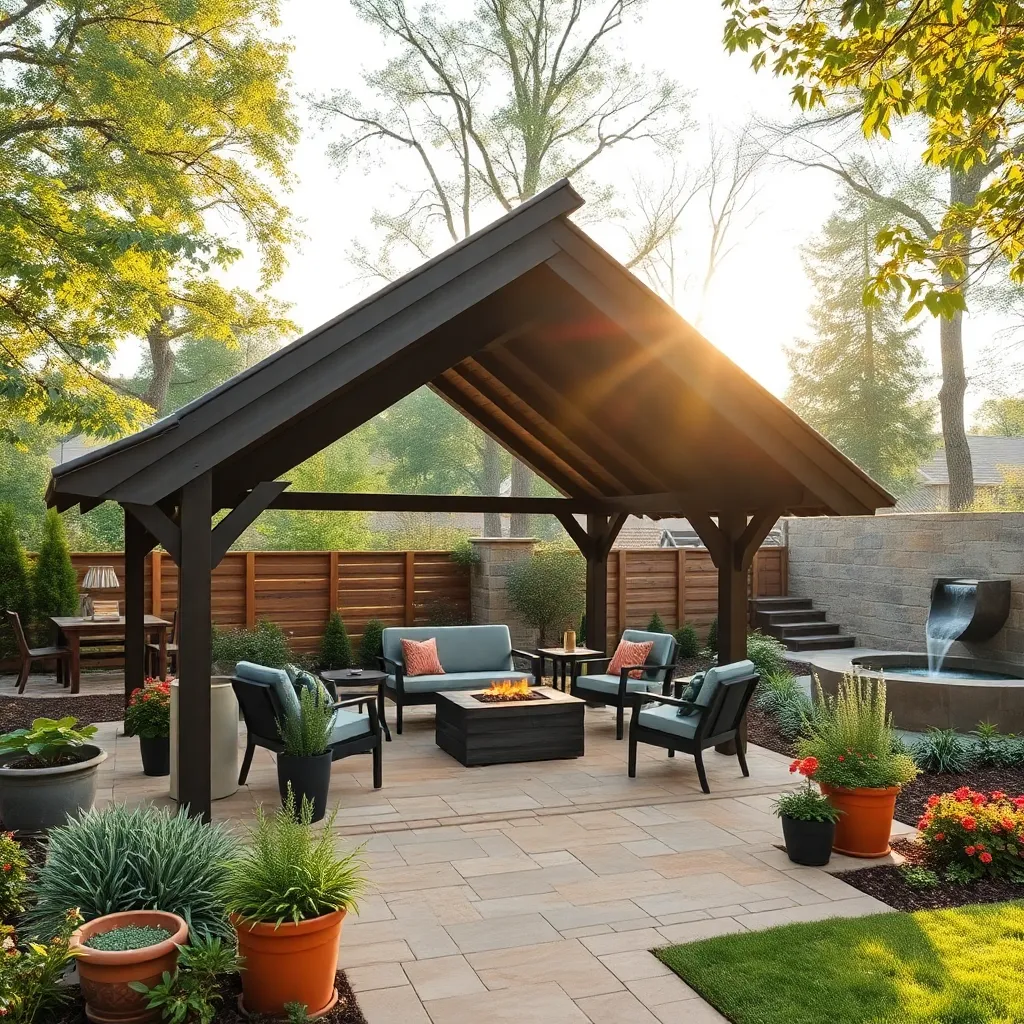
Enhancing your outdoor shelter with solar panels not only promotes energy efficiency but also offers a sustainable power source for lighting and small appliances. To get started, consider using monocrystalline solar panels for their high efficiency and durability. Install these panels on a south-facing roof or structure, ensuring they receive maximum sunlight exposure throughout the day. If your shelter has a flat roof, you can use adjustable mounting brackets to optimize the angle of the panels. This setup can significantly reduce your home’s energy costs while providing a green energy solution.
For beginners, integrating solar panels can be simplified by choosing a solar kit that includes panels, an inverter, and a battery storage system. More experienced DIYers might explore options like connecting a micro-inverter for each panel to enhance performance monitoring. Additionally, ensure your wiring is adequately weatherproofed, and use components rated for outdoor use to withstand the elements. By incorporating solar panels, you not only enhance the efficiency of your backyard structure but also contribute positively to the environment.
Utilize Pergolas for Partial Shade
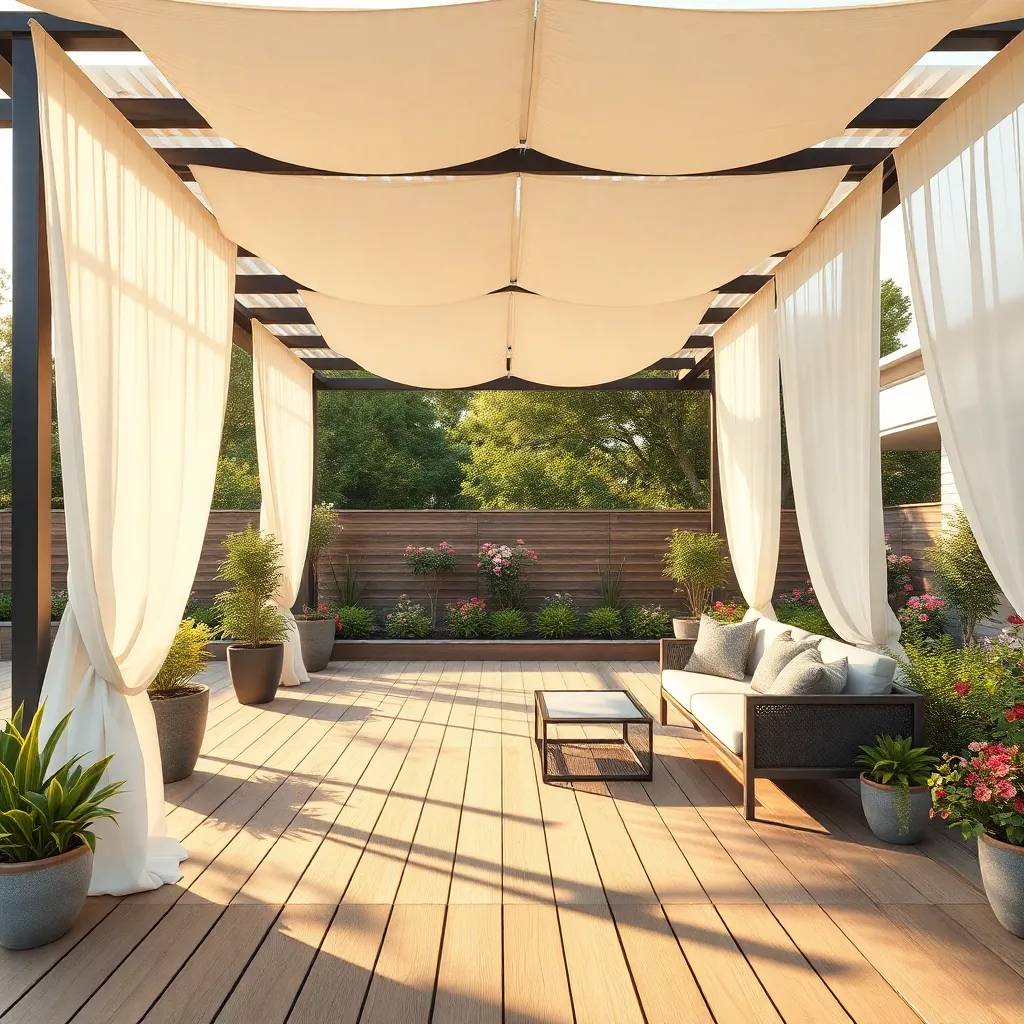
Adding a pergola to your backyard is an excellent way to create partial shade, enhancing both comfort and style. These structures can be built from a variety of materials such as wood, metal, or vinyl, allowing you to choose what best complements your outdoor aesthetic. For beginners, a simple wooden pergola with a lattice roof offers an easy DIY project, while advanced builders might opt for a more complex design with adjustable louvers to control sunlight exposure. Regardless of your choice, ensure your pergola is anchored securely to withstand various weather conditions.
To maximize the functionality of your pergola, consider incorporating climbing plants like wisteria or jasmine to add natural shade and fragrance. Install outdoor string lights along the beams for added ambiance during evening gatherings. When building, aim for a height of around 8-10 feet to provide ample headroom and create an open, airy feel. For those looking to enhance their outdoor living space, integrating a pergola with outdoor seating or a dining area can transform your backyard into a welcoming retreat. The key is to balance aesthetics with practicality, ensuring your pergola meets your needs while elevating your yard’s visual appeal.
Add Water Features for Serenity
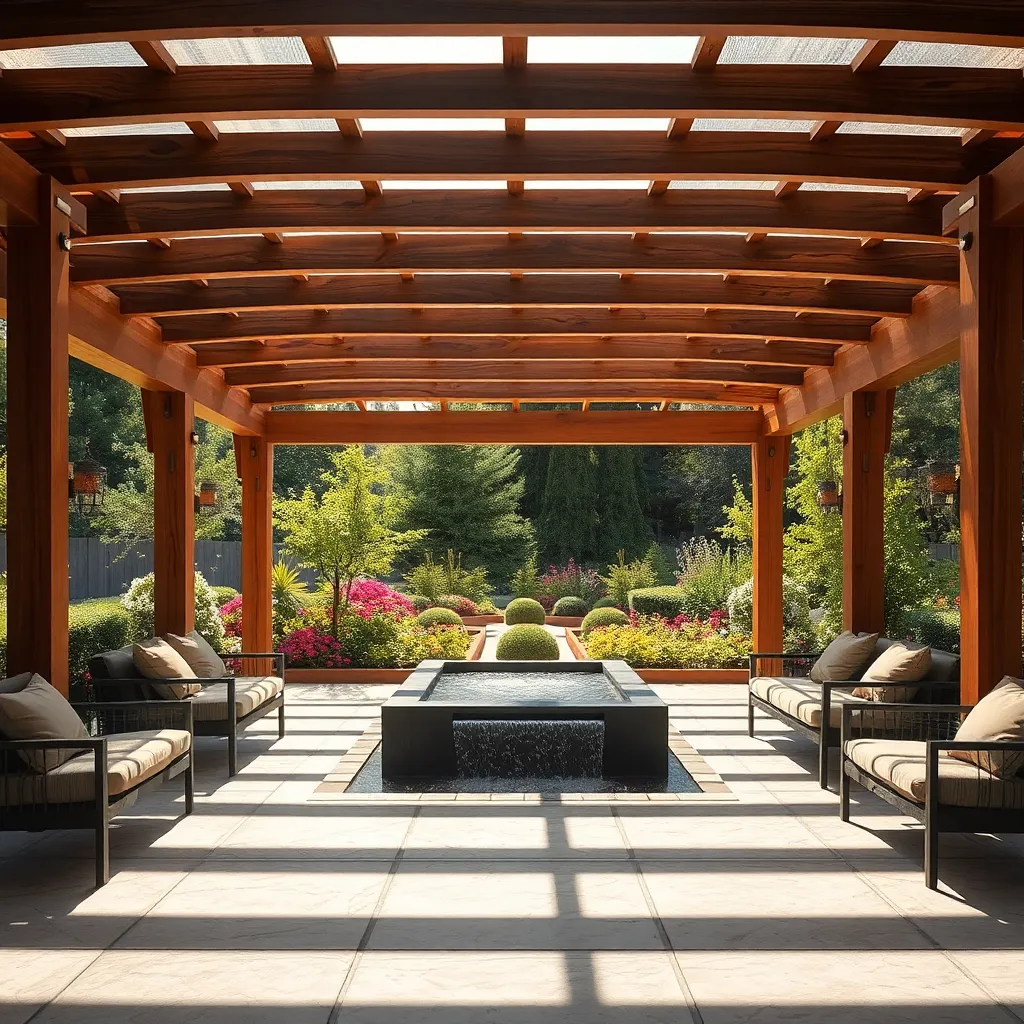
Introducing a water feature to your backyard is an excellent way to add a touch of serenity and elegance. Consider installing a small pond or a cascading waterfall, which can be constructed using natural stones and a submersible pump. For beginners, prefabricated kits are a great option as they offer a straightforward setup and come with all necessary components. Advanced gardeners might enjoy designing custom features, incorporating elements like a koi pond or a fountain with programmable LED lights for nighttime ambiance.
When planning your water feature, it’s essential to think about its placement and scale. A well-situated water feature can become a focal point of your yard, ideally positioned near a seating area for maximum enjoyment. Ensure proper drainage and use a liner to prevent leaks. Moreover, investing in a good filtration system will help maintain water clarity and reduce maintenance. Remember to choose aquatic plants that not only enhance the aesthetic but also help in maintaining a balanced ecosystem. This thoughtful addition can transform your backyard into a peaceful retreat.
Conclusion: Creating Beautiful Outdoor Spaces
In exploring the ’15 Modern Backyard Structures Ideas for Your Next Project,’ we’ve uncovered a treasure trove of concepts that can enhance not just your space, but also your relationships. From intimate pergolas fostering cozy conversations to outdoor kitchens that encourage communal cooking, each idea is a stepping stone toward a more connected and joyful lifestyle. We’ve also delved into the benefits of meditation pods for personal reflection and treehouses that spark childlike wonder and playfulness, both of which can rejuvenate your relationships.
Now, it’s time to turn inspiration into action. Choose one idea that resonates with your relationship goals and take the first step today—whether that means sketching a design, setting a budget, or discussing plans with a partner. Remember, every small effort counts toward building a nurturing environment.
As you embark on this journey, save this article for future reference. It’s a resource you can return to as your relationship and backyard evolve. Look forward with optimism; your relationship success is built on creativity, shared experiences, and the spaces where they unfold. Together, let’s create environments that not only elevate our surroundings but also deepen our connections.
